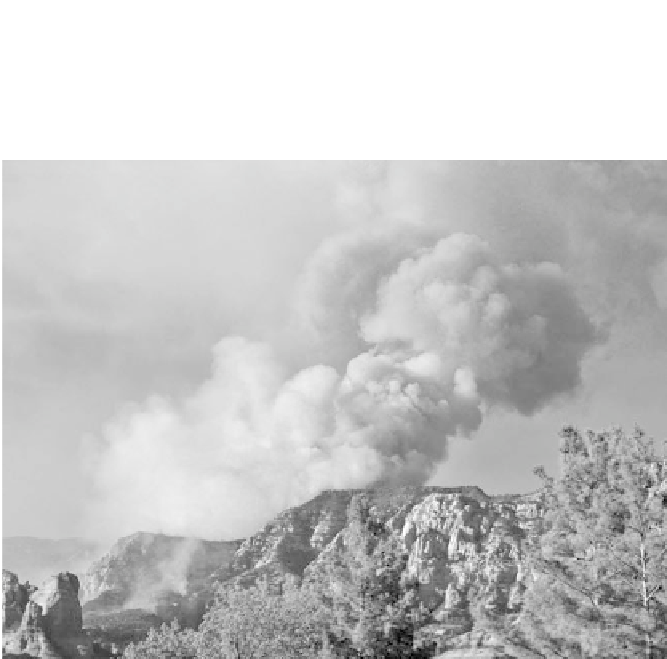Geoscience Reference
In-Depth Information
figure 33. Forest i re in Sedona, northern Arizona, in June 2008. (Photo by B. Lynn
Ingram.)
and the West for thousands of years. Climate researchers, including Dan
Cayan, wanted to i nd out whether Southern California was entering into a
new i re regime. In a study of twentieth-century wildi res, they found that
wildi re frequency did indeed increase over the century, with four times as
many i res at er the mid-1980s as before.
California is not alone in its plight: i res have been on the rise throughout
the American West. h omas Swetnam, co-director of the Laborator y of Tree-
Ring Research at the University of Arizona, sees increased wildi res as one
of the i rst big indicators of climate change in the United States. Warming,
reduced precipitation, and earlier spring onset are all linked with larger forest
i res. Swetnam notes that these impacts are not probable events in the future;
rather, they are happening today.
h
e Drying Colorado River Basin
In the Southwest, a vast desert region that relies heavily on the Colorado
River, similar ef ects concerning snowpack are predicted. Climate modeling




























